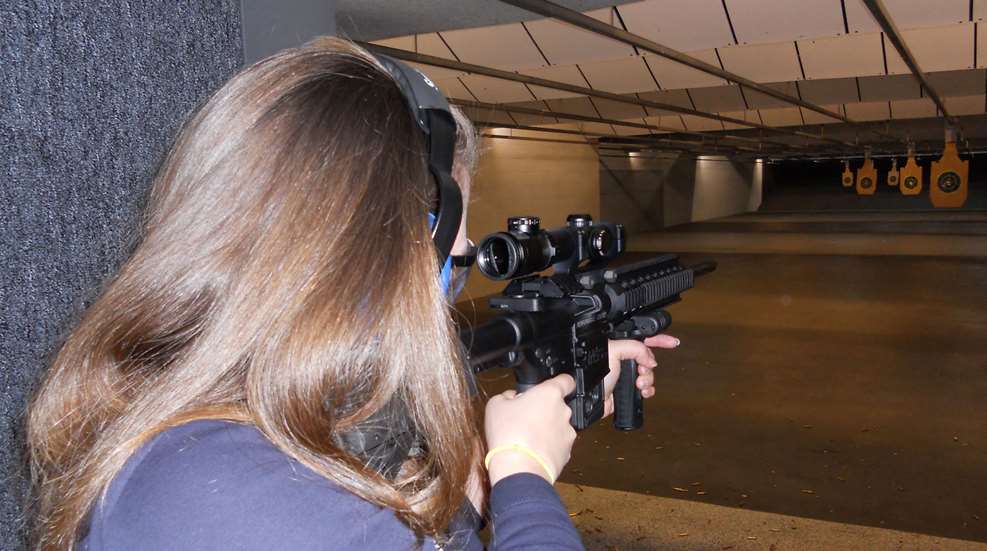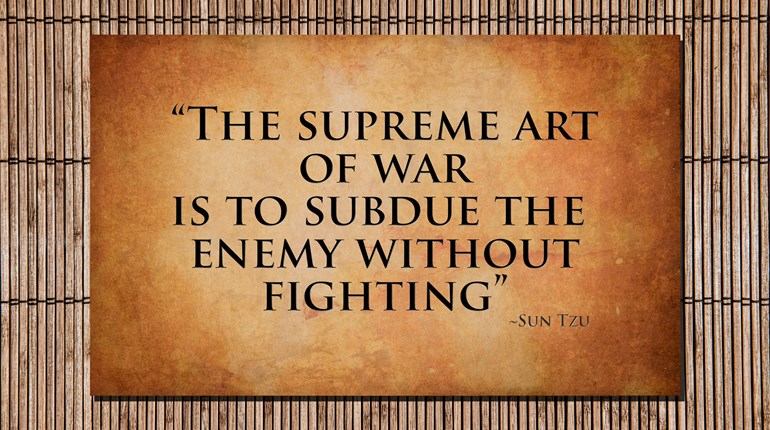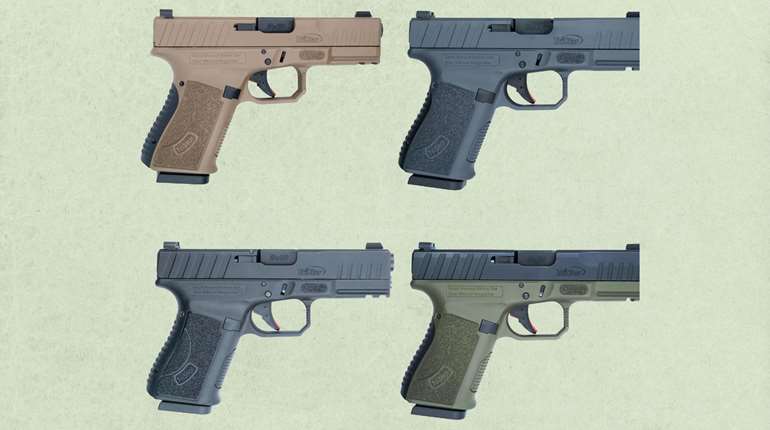
Whether you live alone, you’re a single mom, you live with someone who isn’t into guns, or you just want to be an active partner in a defensive scenario, you’ve come to the realization that you are at responsible for defending your home when something goes bump in the night. What type of home-defense gun is best for women? Well, that depends. You have four basic options, each with their own pros and cons.
1. Shotgun
Shotguns are a terrific choice for home defense, not only because they’re relatively easy to use, but also because, with the right choice of loads, they can be extremely effective at home-defense ranges (1 to 7 yards) without fear of overpenetration. This is a vital consideration if you have other people sleeping in your house who might be just on the other side of the bad guy with nothing but some drywall to stop a bullet or shot pattern.
Ideal shotguns for home defense have shorter barrels of 20 or 18 inches, which allows the gun to be more maneuverable in hallways and around corners and doorways. Any gauge you are comfortable with will be more than adequate for home defense. Choose your shot size carefully: buckshot and BBs will absolutely penetrate multiple layers of drywall, while super-small birdshot like No. 8 is unlikely to give you enough penetration to stop a threat beyond a couple of yards. No. 4s or thereabouts are a compromise that has the potential to handle a close-up threat without severe over-penetration. This is absolutely no guarantee, though.
Contrary to popular thought, you do have to aim a shotgun in a defensive scenario. At typical defense ranges, the shot pattern has very little time to open up, so you’re shooting a very tight pattern rather than a broad spray. It’s much easier to miss than you might expect, especially in a high-stress situation, so a fast-to-acquire red-dot sight is a smart addition.
Pump, semi-auto or over/under? They’ll all work. The O/U is going to be limited in capacity, of course, so I don’t necessarily recommend it. Semis have the advantage of having one less thing to think about, but pumps have the advantage of fewer potential jams and, of course, that intimidating sound.
2. AR or Other Semi-Auto Rifle
The AR-15 is a solid home-defense gun, particularly if you live alone or in an area where you don’t have to worry about penetration through exterior walls (as in a brick or stone house). ARs are lightweight and easy to shoot, and most models are short enough to maneuver around a home with ease. Plus, many come with adjustable stocks that let you get a better fit to your frame, and a gun that fits you well is a gun you’ll shoot well. Capacity can’t be beat, of course, especially with a 30-round magazine, and the semi-auto action lets you continue to pull the trigger as long as the threat is still a threat.
The standard AR-15 shoots .223 ammo, and this will absolutely penetrate drywall no matter what type of projectile you select. In most cases, it will penetrate several walls’ worth of drywall, which means you’ll have to shoot carefully if you have someone sleeping elsewhere in the house. If you’re in a rural setting and need a home-defense gun to do double-duty against coyotes and foxes in the chicken coop, an AR-15 is a solid option.
Select an AR with an adjustable stock, and add a laser or a red-dot optic for fast, easy sighting at night. It’s simple (and tempting) to add accessories to an AR. Don’t go crazy, but do consider a gun-mounted light that lets you illuminate whatever you’re shooting at.
3. Semi-Automatic Pistol
Handguns are, by nature, inferior to long guns like rifles and shotguns. They have limited firepower, relatively speaking, and they are more difficult to shoot well. However, they’re infinitely easier to carry, and if you are on a budget and can only afford one gun for concealed carry and home defense, a handgun is your default option.
Semi-auto pistols have a major capacity advantage over revolvers, with some full-sized models easily holding 17 or more rounds of ammo. Though they are not difficult to shoot, there is a bit of a short learning curve, so if you select a semi-auto pistol as your first firearm, you’d do well to seek out some instruction to help you manipulate it safely and shoot it well (and in truth, this is wise advice no matter what gun you buy).
Over-penetration is still a definite concern, so keep that in mind if you have kids sleeping in the next room. Any load that’s powerful enough to stop a threat is likely to penetrate walls, so although you should be mindful of how powerful your ammo is, you should also identify safe shooting lanes in your home where you know a bullet can penetrate a couple of walls in a worst-case scenario without endangering a family member.
Night sights or a laser are helpful on a pistol that you might have to shoot in dim light. As for caliber, 9mm is exceptionally popular and easy to shoot, even for new shooters. If you need or want to step up to something bigger, try .40 S&W or .45 ACP.
4. Revolvers
Revolvers have limited capacity (six or seven rounds is typical), and the same drawbacks as semi-auto pistols. They’re by no means difficult to shoot well, but they’re certainly not as easy as a shotgun or rifle. The two main things revolvers have going for them are dependability and ease of use. Just pick the thing up and shoot it, basically. They seldom break down and rarely jam, as a semi-auto is apt to do if you don’t operate it correctly in the heat of an adrenaline rush.
The “revolvers are so simple even a woman can use them” cliché is old and insulting, but these guns are undeniably easy to operate. If you were helping Grandma buy a gun and you knew she’d shoot it once, then put it in a drawer and not pick it up again for two years, a revolver would be the go-to option, because it’s just about impossible for her to forget how it works. (Please don’t let Granny do this, but we all know it happens sometimes.)
The .38 Special and .357 Magnum are both great revolver calibers that will get the job done handily. They have the same over-penetration concerns as nearly everything else, so choose your shots carefully. If you’re not going to carry this gun on your person concealed, do not buy a snub-nose, and don’t buy one of the revolvers that are made to be super lightweight. A heavier gun with a longer barrel will be easier to shoot accurately, and it will have less felt recoil.
The perfect home-defense gun for you will depend on who lives in your house, the construction of your house and proximity to neighbors, and what you’re comfortable handling and firing. As stated earlier, any round that can penetrate enough to reliably stop a bad guy will also penetrate walls, and “be sure of your target and what’s beyond it” still applies. Running through home-defense scenarios with your family is a wise move and will help you determine where you can safely shoot, where the potential pitfalls are, and what kind of gun you can maneuver around your home without bumping into walls.
No matter the firearm you choose, some self-defense training is highly recommended to improve your gun handling and marksmanship and to help you develop a self-defense mindset. Click here to find an instructor in your area!














































